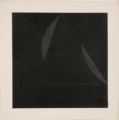Kay WalkingStick: An American Artist surveys the career of one of today’s most accomplished Native American artists and a leading practitioner of contemporary landscape painting. Over the course of four decades, WalkingStick has tirelessly explored her own complex cultural identity, engaging Native history along with feminism, Minimalism and other key art historical movements. She is particularly renowned for her majestic and sensual landscapes, which imbue natural scenery with the charge of personal and collective memory. In addition to tracing WalkingStick’s artistic journey, this exhibition offers a fresh perspective on issues of race, identity, and national history that are central both to contemporary Native art and to American culture at large.
The national tour of Kay WalkingStick: An American Artist is organized by the American Federation of Arts and the Smithsonian’s National Museum of the American Indian. It features approximately 60 of her most notable works, drawn from public and private collections across the country and from the collection of the artist.
Kay WalkingStick: An American Artist demonstrates the breadth of WalkingStick’s achievements and her contributions to American art. While WalkingStick’s work has been widely exhibited and discussed, this touring retrospective will be the first survey of her singular career. The exhibition, which originated at the Smithsonian’s National Museum of the American Indian (NMAI), was co-curated by Kathleen Ash-Milby (Navajo), associate curator, and David Penney, associate director for Museum Scholarship at the Smithsonian’s NMAI.
WalkingStick’s biography is intimately tied to her art. The exhibition examines key moments of her life, which further illuminate her methods and motivations. As a young artist in the 1960s and 1970s, she created bold, graphic paintings using a color-blocking technique, eschewing modeling in favor of expanses of flat hues. By the mid-1970s, WalkingStick shifted away from the figure and toward abstraction; at the same time, she grew increasingly interested in her Native American heritage. During this period, she researched American Indian history and made paintings in homage to famous Native figures such as Chief Joseph, the great Nez Perce leader, and Sakajawea. Many of these are marked by thickly impastoed, sculptural surfaces, which WalkingStick achieved by scratching and manipulating layers of acrylic paint mixed with wax.
During the 1980s, WalkingStick returned to figuration through diptychs in which she paired abstract and naturalistic representations of the same landscape, charting her travels throughout the United States and around the world. This format, which WalkingStick has continually developed and returned to, has become her hallmark. Shortly after beginning to work in diptychs, WalkingStick suffered a devastating personal loss and her art became more volatile, dark and intense. Beginning in 1996, WalkingStick’s extended trips in Italy gave her the opportunity to study that country’s landscapes and art. During this period, she produced sensual paintings and drawings, often embedding personal narratives about sexuality, memory, and the body in representations of architecture and nature. The influences of Greco-Roman and Italian Renaissance art can be seen in decorative motifs; in the use of new materials, such as gold leaf; and in the Mediterranean views that frequently appear. WalkingStick’s sketchbooks, several of which are included in this exhibition, also document her travels in Italy and beyond, attesting to her deft ability to weave together disparate influences.
Over the past two decades, WalkingStick’s interests in landscape, the body, and history have merged in majestic and often monumental compositions. While the diptych format still appears, it does not dominate or dictate her mature practice. References to specific places — often sites laden with historical associations — have become more common and many works indulge, simply and unapologetically, in the beauty of the natural world.
WalkingStick’s most recent paintings synthesize themes that she has explored throughout her career, joining rugged Western scenery with decorative motifs drawn from local Native peoples. These paintings unite figuration and abstraction, Western and Native aesthetics, and personal and collective memories. Through the variety and sustained quality of her paintings and drawings over four decades, WalkingStick has challenged reductive understandings of what contemporary Native art can be.











